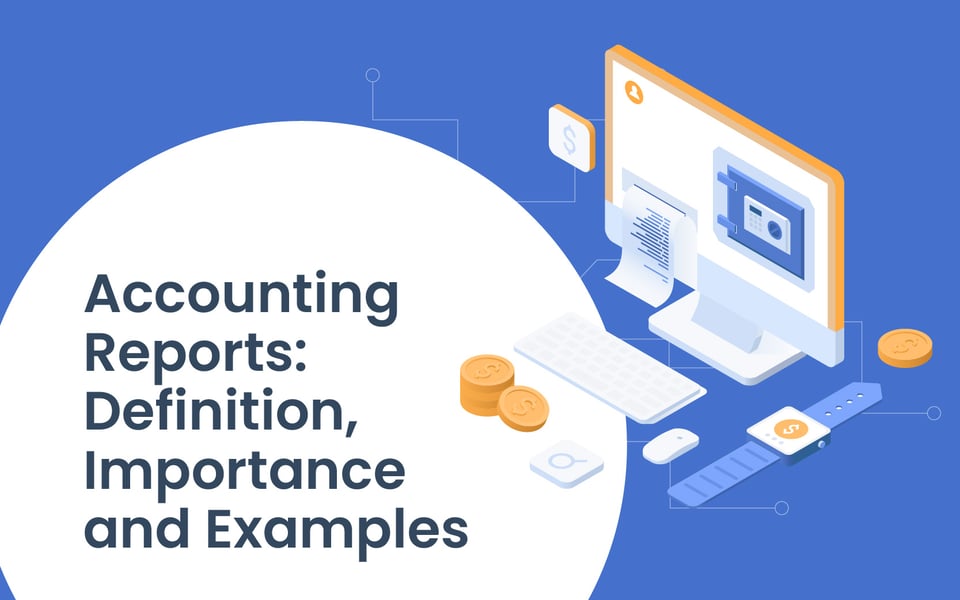
The accounting cycle keeps your company’s financial statements accurate, keeping you in good standing with the IRS and enabling you to make smart business decisions. But many small-business owners don’t understand what the accounting cycle is or how it works. Our guide to the accounting cycle walks you through what it is and how to navigate it successfully.
What is the accounting cycle?
The accounting cycle is a nine-step process businesses use to compile information needed for important financial statements. It covers everything from analyzing, measuring, and recording transactions to adjusting balances and closing the books.
Why are financial statements important?
Financial statements are formal records of a business’s financial activity. They’re used by investors, lenders, and government organizations to make decisions about credit, investments, and taxes, respectively. They’re also used internally to track financial health and make purchasing and operational decisions.
The most common small business financial reports are:
- An income statement tracking money movements, including net income/loss and projecting future profits
- A balance sheet showing assets, liabilities, and equity
- A cash flow statement telling how your business's cash moves on a monthly basis
- An owner’s equity statement monitoring changes in owner equity
How do you move through the nine steps of the accounting cycle?
Accountants take nine steps throughout the accounting cycle to ensure financial statement accuracy:
- Analyze and measure financial transactions.
- Record transactions in a journal.
- Post journal information to the general ledger.
- Prepare an unadjusted trial balance.
- Prepare adjusting entries.
- Prepare an adjusted trial balance.
- Prepare financial statements.
- Prepare closing entries.
- Prepare post-closing trial balance.
The process is pretty comprehensive, so how do you go about making your way through the accounting cycle? Navigate each step in turn, taking appropriate actions along the way.
1. Analyze and measure transactions.
Start by collecting your company’s transactions for analysis, measurement, and recording. You should minimally record:
- All cash sales
- All purchases
- Anything that's measurable, relevant, or reliable
- All events, including external and internal transactions
The bottom line: Record everything, or at least as many transactions as possible that affect your business's financial position.
2. Record transactions in a journal.
Also known as “journalizing,” recording items in a journal chronologically gets you organized by listing transactions and other events in terms of debits and credits. Each entry has four parts:
- Accounts and debit amounts
- Accounts and credit amounts
- Transaction dates
- Transaction explanations
If it helps you stay organized, separate your transactions and events into separate journals—for example, cash transactions in one journal and credit sales in another. Bonus: You’ll get a glimpse of the amount of cash you have available.
3. Post journal information to the general ledger.
Regardless of whether you maintain separate journals, you need to consolidate everything into one master source too. The ledger contains all transactions and events as well as a chart of accounts to track:
- Assets
- Liabilities
- Owner’s equity
- Revenue
- Expenses
General ledger accounting uses the double-entry method, where transactions are recorded twice to account for debits/credits and how they offset each other. Debits fall under the left-hand column, with credits in the right-hand column.
4. Prepare an unadjusted trial balance.
Once you’ve posted every transaction—be it for a month or an entire quarter—in your ledger, you’re ready to prepare your financial statement. So you’ll want to measure your unadjusted trial balance, which tells you the balances for each of your ledger accounts at the end of your reporting period. Just go through the debits and credits in your ledger and make sure the totals in your debit and credit columns match.
5. Prepare adjusting entries.
Despite your best efforts at recordkeeping, your numbers might not always line up. Thankfully, adjusting entries pick up the slack. Review your ledger line by line and ask yourself:
- Did I provide services that won’t be paid until the next reporting period?
- Did I receive products or services that won’t be paid until the next reporting period?
- Are all dates and dollars recorded accurately?
- Is there anything I haven’t accounted for?
It’s easy for something to go wrong when you’re manually tracking transactions, so the accounting cycle includes a stage to investigate and adjust entries. But what does this look like in your ledger? Add a third column alongside credits and debits. From here, add or subtract from your unadjusted trial balance to reflect your true financial picture.
Three core accounting principles guide adjusting entries:
- Revenue recognition principle: Revenue is recognized when a critical event has occurred, making the dollar amount easily measurable to your company.
- Matching principle: Companies report expenses concurrently with their associated revenues and are matched on the income statement.
- Accrual principle: It doesn’t matter if money hasn’t changed hands yet. If you’ve given or received products/services during that reporting period, count them.
6. Prepare an adjusted trial balance.
If adjusting entries don’t provide the answers you need, the adjusted trial balance can ensure your numbers are accurate. Insert yet another column in your ledger that adds your unadjusted trial balance to your adjusting entries.
Important! Your new total must be $0 before moving any further in the accounting cycle. Having trouble? Reach out to an accounting services agency for help balancing your books.
7. Prepare financial statements.
With the recording and number crunching behind you, you should have the data required to complete most financial statements. At a minimum, you’ll need your income statement, balance sheet, cash flow statement, and owner’s equity statement.
8. Prepare closing entries.
There’s a finish line to everything, and by now, you’re close to actually closing your books. Closing entries move balances from temporary accounts—such as revenues, expenses, and dividends—to permanent accounts, such as an income summary.
Temporary accounts are transactions that occurred during your reporting period. They capture a snapshot of your business over the month, quarter, or year you’re reporting on but don’t provide much of a big picture.
Permanent accounts reflect a big-picture view. By moving balances from temporary accounts to permanent accounts, you are updating the overall financial health of your business and emptying temporary accounts in preparation for the next accounting cycle.
Getting these closing entries ready sets you up to determine your post-closing trial balance and close out the accounting cycle.
9. Prepare a post-closing trial balance.
Preparing a post-closing trial balance picks up where you left off, ensuring that your debits and credits still match up. But instead of factoring in temporary accounts, this balance only includes permanent accounts such as assets, liabilities, and owner’s equity.
If you see balanced totals, you journaled records properly and posted accurate closing entries. On the flip side, inaccurate post-closing totals set your business up for failure, starting the next reporting period with inaccurate information and making it impossible to report correctly.
What happens if you don’t follow the accounting cycle?
The accounting cycle is meant to be followed in order, like driving directions. Each step relies on the ones before it, so if you skip a step or two, you risk getting lost and capturing inaccurate financial activity. This harms your ability to win credit or investments and cripples your ability to make sound business decisions and forecast sales.
Plus, if you make a wrong turn, it can come back to haunt you. That’s because yearly financial statements build upon each other. One mistake this year can impact your financial reporting in the long run.
Financial reporting mistakes can kill your business. Just look at what happened to companies such as WikiLawn, Capital Coating, and Activate Your Vision.
Grow your business with the accounting cycle and Ignite Spot.
The accounting cycle provides checkpoints to ensure that your finances are in order every reporting period. Rather than spending time and resources learning the ins and outs of accounting, startup and small-business executives can outsource it. Ignite Spot makes sure you have accurate information to grow your business, and we rely on the accounting cycle to guide us. We help you navigate and provide context for your business's financial picture. We also provide customized, expert advice on growing your team, choosing profitable vendor relationships, and setting goals.
Get access to experts in maximizing profits and visibility to make better business decisions. Download our free cash forecast tool and contact Ignite Spot to get a better handle on your company’s financial outlook.



![[Free Resource] Try our Cash Forecasting Tool to manage the financial position of your company >>](https://no-cache.hubspot.com/cta/default/396263/755edab3-e042-4cec-9c9f-882393f8db1f.png)









.png)




